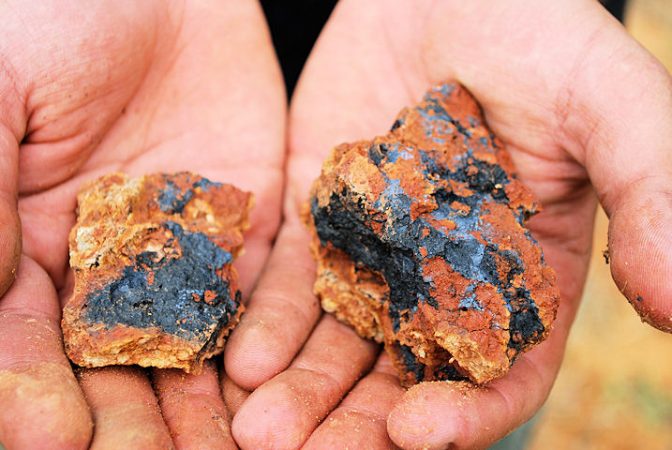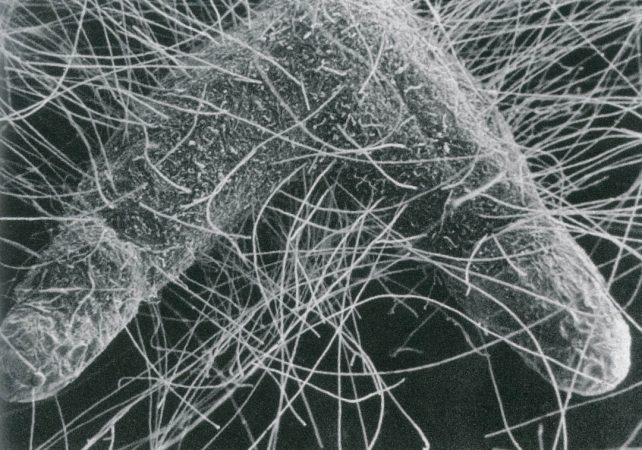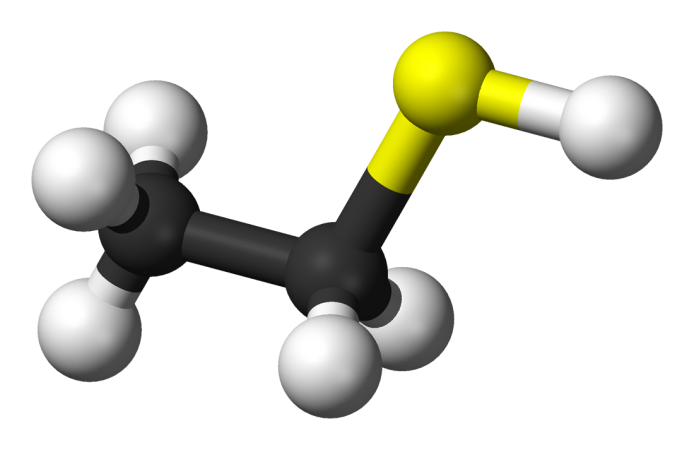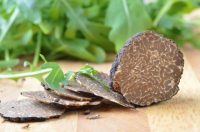
My friend, Guy Miller, who is a physician, biochemist and deep thinker about the role of electrochemistry in biological systems, walked into the Bonny Doon Vineyard tasting room more than twenty years ago, and somehow in very short order, struck up a conversation about redox chemistry with me. (“Far more interesting than acid-base chemistry,” he has told me on more than one occasion, “which is what enologists tends to focuses on, because it’s a lot easier to understand.”)[1] Guy knows something about the subject, and it has been his scientific preoccupation for as long as I’ve known him. He has very graciously offered to apply his own brain power as well as some super-computing time to try to help me answer some fundamental questions – his research really ties in very closely to an understanding of what might be called the the qi or “life-force” and order of biological systems – as we try to work out an approach to discovering real congruence in our efforts at Popelouchum. These are the questions I posed to him, with a bit of annotation:
What is “minerality” (and secondarily, what is its formal relationship to “terroir”)?[2] Special bonus question: Why do some wines live and some wines die?
 Like obscenity, everyone knows “minerality” when they see/taste it, but no one has any idea precisely what it is. The most significant feature of “mineral” wines is that they are much more resistant to oxidation over time, even those wines that are seemingly absent the usual list of anti-oxidative suspects – anthocyanins, tannins, etc. Great Burgundies after opening will often remain fresh for as long as a week or even longer. Nebbiolo from Lessona (grown in very low pH soils that are also very high in iron) will go weeks if not months after opening before the appearance of any acetaldehyde.
Like obscenity, everyone knows “minerality” when they see/taste it, but no one has any idea precisely what it is. The most significant feature of “mineral” wines is that they are much more resistant to oxidation over time, even those wines that are seemingly absent the usual list of anti-oxidative suspects – anthocyanins, tannins, etc. Great Burgundies after opening will often remain fresh for as long as a week or even longer. Nebbiolo from Lessona (grown in very low pH soils that are also very high in iron) will go weeks if not months after opening before the appearance of any acetaldehyde.
“Minerality” is sometimes confounded with “acidity,” salinity and often associated with the presence of sulfur-containing “reductive” products, esp. disulfide and mercaptans.[3] Wines aged under reductive condition, sur lie, for example, where there is the intentional creation of a complex of reduction products, seem to mimic the presentation of “mineral” wines. There is some speculation that the presence of succinic acid (a fermentation by-product) might itself be linked to “minerality” (or even to generalized wine quality), but begs the question of what conditions in the vineyard might favor its formation, if it is indeed an integral part of the phenomenon. Here are some of the features, known accomplices, if you will, of wines exhibiting “minerality”:

a) Derived from grapes grown on mineral-rich soils with extant parent material (small pebbles, gravels in process of decomposition), also soils rich in exchangeable cations, typically possessing a large internal surface area, i.e. volcanic, schistous, porphyric, granitic, etc. (Pet theory: greater internal surface area = bigger habitat for colonization of mycorrhizae.) Limestone soils (also with miles of internal surface area) represent a strong and recognizable terroir, but it is not really thought of so much as mineral, more as producing wines with greater length and finer perfume.
b) Organic/biodynamic/no-till farming, also use of biochar. All of these practices have been shown to correlate to greater microbial life (mycorrhizae) in the soil, which is an unequivocally good thing both for the plant as well as for the produce it yields – improved disease resistance, resistance to water stress, better nutritional status and generally enhanced flavor; they can be thought of as a terroir Which brings my question: Apart from affording better nutritional status to the plant, enabling it to withstand diverse stresses – drought and disease pressure, notably – might there be ways that the mycorrhizae themselves (or their metabolites) contribute to “minerality” or terroir directly, perhaps by moving through the vasculature of the plant itself, like an endophyte and ending up in the fruit? (The identification of transient organisms in wine that are not easily plated, is still very rudimentary.)

Discussion: I think of minerality as a quality that adds dimensionality or length to the taste of wine, somehow drawing out the attack on the palate, or more accurately, its “sustain.” There appears to be some element in “mineral” wines inhibiting the wine’s ability to become saturated with oxygen. There have been a number of studies – likely not very well thought out or well conducted – that suggest that “mineral” wines do not seem to possess greater concentrations of minerals relative to more “standard” wines, but these are just surveys of concentration of minerals, not really a consideration of what redox state they may be in. Might reduced iron (or some other metallic element) be the key? Obviously, fermentation creates highly reductive conditions, so presumably all elements that can be reduced during fermentation are reduced. But under cellar ageing conditions when the wine has re-equilibriated, might there be particular redox couples that are favored that would continue to keep relevant metals in the more reduced state? (My money is on mercaptan/disulfide.)

What does it mean for a grape to be perfectly tuned to a site (which presumably leads to the wine having “perfect pitch”)?[4]
This is definitely a trickier question than it seems, because from a grape’s point of view, perfectly tuned means that the grape will achieve its telos, which is to have a nice sunny tree to grow up into, and an excellent chance of being eaten by a bird and getting pooped out far, far away. A winemaker, of course, has a somewhat different trajectory in mind. Perfect pitch in a wine is generally correlated with the creation of certain optimal growing conditions for a given variety – the most ideal set of conditions that will dependably produce a recognizable, distinctive fingerprint, beginning with its typical climatic conditions – absolute number of sunlight hours, likely as well, the arrayal of those hours during the growing season based on latitude, to other considerations of air temperature (minima and maxima), soil temperatures, rainfall, relative humidity, degree of cloud cover, etc. The physical characteristics of the soils are utterly crucial: water-holding capacity, soil texture, clay content, trace mineral content, exchangeable cations and anions, effective soil rooting depth, location of water table, and the physical orientation of the vineyard also crucial – degree and aspect of slope, surrounding geophysical features. The best sites – the grands crus – are the ones that offer Goldilocks solutions to the plant’s needs,[5] ideally optimizing growing conditions for that particular variety, clone, and biotype for all but thoroughly anomalous vintages. Most of the classic European vineyards have identified the so-called “great growths” – vineyard sites that reliably produce the most distinctive wines in most years – and it would be of course quite interesting to look at both the differences in the physical conditions of those vineyards and wines themselves from the lesser growths that surround them (produced from the same grapes and by same winemaker). Of course, one cannot overlook the role of the farmer in optimizing the degree of congruity between the plant and the site. His decisions as to rootstock selection, row spacing, row orientation, training method, plant density, degree of thinning (both shoot and cluster thinning), harvest date, and other cultural practices are crucial in determining overall grape quality.
So, if you were to look at the aggregate of all of the growing conditions in the vineyard, you would probably end up looking at factors that drive the vine in the direction of some sort of Golden Mean: In cool, challenging conditions where the grapes struggle to ripen (the Mosel or Côte-Rôtie, for example), the best vineyards are those on southern slopes, with other factors (high incidence of reflected light, etc.) that push them to ripeness. In warmer, dryer conditions, such as one finds in California, northern and eastern exposures would be absolutely optimal. I believe that all grapes have some sort of genetically pre-determined set of optimal ripening timing events, such that when the magical day comes, say at around 110 days between flowering and harvest, they are within the perfect range of acidity/Brix and phenolic development.
While there are definitely good outward signs of vitaceous virtue[6] – small clusters, moderate internode length, moderate vigor and moderate natural crop load, healthy appearance of the leaves, evenness of ripening, etc., absence of discernible debilitating disease (such as virus), the deeper, more subtle indications of quality are not particularly visible from gross inspection. To be truly great, a wine has to have a quality of singularity; it really can’t taste like anything else.[7] So, my worry is that in trying to quantify quality, one may be making the same error that people have made in characterizing human beauty; when you construct a face, observing the qualities of symmetry, and how well length of nose, chin etc. line up to the Golden Ratio, you end up with a figure that is somehow just generically pretty, but not necessarily truly “beautiful.” If real “beauty” were entirely describable through a set of mathematical parameters, we would likely miss out on some of the really great, non-traditional beauties; arguably their minor “flaws” are possibly the qualities that make them interesting.

Marilyn without the mole would just be another pretty face, and not the icon. So, you can look at all of the obvious manifestations of grape quality; what are the more subtle qualities in wine that elevate it from very good to mind-bendingly great? I think that it is absurdly difficult and wrong-headed if not impossible to try to figure out how to create the conditions necessary to replicate Burgundy.[8] It may well be difficult enough to figure out what are all the relevant conditions necessary to produce a great Pinot noir. But, if you can find an extremely interesting and expressive site/terroir(which I believe I have), the more pertinent question is: Within a population of genetically different plants located on a given site, which amongst them have the qualities that are most likely to produce a wine of real beauty and distinction?[9] So, this brings me to the next question, which is something like:

This is not an easy question to answer at all. Leaving aside the vast chasm of aesthetic differences that separate certain gung-ho wine enthusiasts for the currently prevalent New World style from those of us (right-thinkers) who value the more subtle beauty and restraint of Old World examplars, beauty in wine is found in a great diversity of wine styles. There are great or beautiful wines that are highly concentrated – a Sagrantino from Umbria or Tannat from Madiran, for example, densely dark and tannic, heady in alcohol; these can certainly be extremely interesting and satisfying wines, but not necessarily the ones that I reckon are able to express real elegance; they might just have too much to say. And then there are the weightless, pale and elegant wines of the Jura, Liguria and elsewhere, evocative of some of the qualities that we esteem so greatly in red Burgundy. (Their elegance is often under-appreciated because what they do, they do in a much quieter fashion.) I believe that there are likely an infinite number of solutions to how to produce a great wine from a given site; what is most interesting to me personally is to figure out how to produce from a range of possible grapes on a given site a wine a wine that absolutely honors the integrity of the site while remaining congruent with my own aesthetic sense. Further, can one possibly formulate some rules about what a great and beautiful wine might look like; might there be some signifiers or proxies for “greatness” or “beauty?”
Here are what I imagine are some criteria for greatness and beauty in wine:

1) Ability of the wine to age long enough to develop complexity. Ability of the wine to tolerate oxidative challenge upon opening turns out to be a pretty good indicator of its overall longevity.

2) Complexity, nuance, refinement, but also with a deep essential “core” (which might be linked in some sense to varietal identity and intensity. Obviously, there are likely more than a few molecules linked to varietal identity, but it wouldn’t hurt to try identify the most important ones. For Syrah, I might look at what are the important precursors for the synthesis of rotundone (the peppery,baconfat/smoked meat character); for Pinot Noir, the precursors for geosmin (its quasi-beetroot character). The fact is that grapes that are not grown in the right location generally fail to even connect with an expression of basic varietal character, so further refinement of the search might be gilding the lily. But if one could look perhaps for differences in aromatic potential – what are the necessary precursors needed for complex aromas – that might be quite useful.[10]
3) Dynamic tension in the wine between “fruit” and “mineral.” By “fruit” is meant the sum of lactones, ketones, esters, terpenes, aldehydes, presumably anthocyanins as well, that give the wine a sense of freshness, and maybe wholesomeness. Ephemeral esters, typically associated with freshly fermented wine should not to be considered as they don’t persist in the wine. Wines that are just “fruity” without the corresponding degree of earthy gravitas/minerality (whatever that is) are just frivolous confections; wines that are stony without an expression of fruit are joyless. A beautiful wine somehow is able to create a dance between these two elements.[11]
4) A great and beautiful wine seems to move in a sort of orderly (or disorderly) progression of flavors, a succession of partings of the curtain and corresponding “reveals.” Somehow I imagine this is linked to the presence of these “mineral” elements (or redox couples?) that either retard the wine in its saturation of oxygen, or alternately, maybe owing to their pungency (I’m thinking of mercaptans here), block the expression of the more delicate aromas that are not discernible until the more odiferous molecule can be oxidized into a less intrusive form.
 Again, I don’t think that one can find the best grape in the abstract to grow on one’s site, but maybe you could find the one (or likely several) that seems to be best suited to the site within a significant population. But note that we are trying to achieve a couple of different objectives and the methodology would differ a bit for the two ends. In one case, we are taking a grape variety that we think already performs pretty well already at Popelouchum, and we’re trying to tweak it into greater degree of congruence (the so-called “auto-tuning”)[12] and this seems to be a relatively straightforward process, especially if you are looking at differences between a lot of similar-looking objects; you want just a little more of something special,[13] or more likely, you may settle on choosing a mix of several biotypes to achieve a more complete wine – one for structure, one for fragrance, and another one (the catalyst) that just seems to magically link the several elements together.
Again, I don’t think that one can find the best grape in the abstract to grow on one’s site, but maybe you could find the one (or likely several) that seems to be best suited to the site within a significant population. But note that we are trying to achieve a couple of different objectives and the methodology would differ a bit for the two ends. In one case, we are taking a grape variety that we think already performs pretty well already at Popelouchum, and we’re trying to tweak it into greater degree of congruence (the so-called “auto-tuning”)[12] and this seems to be a relatively straightforward process, especially if you are looking at differences between a lot of similar-looking objects; you want just a little more of something special,[13] or more likely, you may settle on choosing a mix of several biotypes to achieve a more complete wine – one for structure, one for fragrance, and another one (the catalyst) that just seems to magically link the several elements together.
But the far more complex problem is that we are also talking about breeding new varieties de novo, i.e. crossing two different varieties from very different lineages, and this really gets to the very core of not just what makes a great biotype, but what makes a great, classic grape variety itself. I’ve agonized at great length about the criteria one might begin to deploy to make a thoughtful selection of worthy parents,[14] and something akin to throwing the I Ching is probably as good as it gets. But after you’ve decided on worthy parents for your 10,000 offspring, and you’ve discarded the non-viable grapelets, how do you find amongst 10,000 likely very disparate individuals the real genius grapes? Remember, we’re likely starting with one red parent and one white parent, so the kids are going to be red, white and pink. My guess is that it will be very unlikely to discover the new vitaceous Mozart or Einstein, i.e. a grape on a par with the unique complexity of a Pinot Noir, Riesling or Syrah, but it may well be quite possible to find a grape that is particularly well suited to the exigencies of the site, and will produce a wine with unique flavor characteristics. Paradoxically, I believe that while the flavor sensation of this grape might be unique, it will likely provoke a kind of haunting recognition. I will know this smell and taste; it will be familiar to me when I smell it for the first time. But, I don’t think you can imagine the flavor you’ve been looking for until you come across it.

How do you foster a brilliant biome in your vineyard?[15] How might one detect the presence of other microorganisms, still unidentified in wine that act as bio-protectants, i.e. effectively keep in check the proliferation of noxious organisms: brettanomyces, acetobacter, pediococcus, etc.
A healthy vineyard biome does not itself make a great wine, but is certainly critical to the optimal expression of terroir; it would be enormously useful to understand all of the activities that favor this formation. It would be interesting to learn how feasible it is to actually change the vineyard biome. Anecdotal evidence suggests that it may be a bit easier to do than changing the gut biome.
[1] I was also interested in redox chemistry at the time, as I had coincidentally recently gotten to know Patrick Ducournau, a winemaker in Madiran, who was in the process of inventing micro-oxygenation (MOX) at the time. (He invented MOX as a cost-effective solution to taming the very fierce Tannat.) Patrick thought about wines the way that Chinese doctors envision living beings, as dynamic systems, with a sort of unique life arc or trajectory. Patrick was focused primarily on the wine’s phenolics (mostly skin and seed-based tannins), which were its primary (but not entire, as we discuss later) anti-oxidative system. As a winemaker, Patrick’s insight helped me to engage on a much deeper, more perceptive level with the wines, really trying to grok where they were on their life’s journey.
[2] I would differentiate these two terms as follows: “Minerality” is itself another way of saying “life-force” or the ability of a wine to tolerate oxidative challenge, and is associated with a certain set of organoleptic sensations. Wines of terroir most typically express a degree of minerality but terroir itself pertains to the unique fingerprint of the qualities of the wine attributable to its place of origin. As such, I think of terroir as more of a pattern or form than a tangible material substance – seemingly more of a wave than a particle.
[3] There seems to be no question in my mind that sulfur-containing compounds are implicated to some extent in the question of minerality, but their presence (or absence) does not fully illuminate the phenomenon.
[4] This doesn’t necessarily speak to the degree of congruity of plant to site, but it is said that the metric that is the most reliable predictor of wine quality is the ratio of overall root mass to fruit volume, i.e. deep-rooted, old vines, carrying little fruit make the best wine; drip-irrigated (with few roots), over-cropped vines, i.e. de rigueur in CA., make the worst.
[5] A great site is one that is capable of affording the plant a degree of flexibility to respond to diverse challenges, i.e. a well-draining soil (slightly sloped) in the event of excessive moisture, but adequate water holding capacity in the event of droughty conditions. Withal, a set of growing conditions that allow for the greatest likelihood of the plant achieving homeostasis, e.g. sufficient available moisture and requiring that the plant osmotically regulate (i.e. dig deep) to gain access to the moisture, (thus moderating excessive vigor, internode length, leaf and cluster size, etc.), will reliably produce the most balanced wine, though not necessarily the most distinctive.
[6] There was a very strange practice called “sensitive crystallization,” which grew out of the biodynamic movement in the 1920s and which originally attempted to visualize the “organization” and life-force of given organic compounds by extracting them with a reagent, crystallizing the solution in a Petri dish, then photographing the resulting crystal form on a light table. The practice was particularly effective in the visualization of the freshness of vegetable produce, but also ultimately was used as a reasonably accurate diagnostic for certain sorts of cancer. As a technique for visualizing the complexity and organization of a given wine, it continues to show a lot of promise, though there are but few experienced “readers” of these particular tea leaves. It’s a fairly tedious process, but the photographs of sensitive crystalizations could easily lend themselves to machine interpretation. (Mineral wines are absolutely striking in the density and complexity of the crystals.)
[7] This is perhaps too important a point to place in a footnote, but an absolutely crucial feature of a great grape is its ability (under the right set of conditions) to act as an effective medium for the transmission of soil characteristics (terroir). In general, it seems that white varieties do a better job in transmitting soil characteristics, presumably because they are comparatively less cluttered with dense flavor elements, such as tannin. Not surprisingly, it is the relatively neutral quality of certain varieties (such as Chardonnay, but also Savignin and Chasselas) that make them ideal translators. (Varieties like Gewürztraminer or Sauvignon Blanc have such strong, pungent aromatics that they seem to occlude the perception of soil characteristics.) Higher acidity wines (a necessary but non-sufficient criterion for ageability) with a persistent element of fruit (like Riesling) are perhaps ideal. Amongst red varieties, varieties with what might be termed a sense of openness on the palate and generally more moderate tannins – Pinot noir, Nerello Mascalese, Rossese, Poulsard, or even, Grenache, for example – seem to possess the most interesting qualities for the transmission of soil characteristics. But, understanding what makes a given variety or biotype a better transmitter of terroir than another is an enormously deep question, and related to the central mystery under discussion: What is true beauty or greatness in wine? (Cf. infra.)
[8] Actually, it’s quite simple: just move to Burgundy.
[9] I’m afraid it may well be far more complicated than that. I would bet that for real complexity, you want at least a certain number of differing biotypes of a given variety. While there are certainly superior clones or biotypes for a given site, you will likely want differing biotypes that will cover different elements of the wine’s presentation. It would be an accomplishment just to formulate some rules as to which elements of the wine’s presentation must be addressed in creating a balanced and complex wine.
[10] There are all sorts of very strange bits of lore relating to the presence of putatively perfect balance in a wine, for example, the appearance of the flavor of licorice in wine (after the wine is produced) – a bit like the green flash of a sunset – supposedly an indication that the wine has achieved its absolute aromatic potential, and perfect degree of ripeness. Would be interesting to look for the precursor of this compound.
[11] I haven’t even addressed the enormously complex question of what makes the fragrances of wines made from some grape varieties more haunting and compel ling than others, (with Pinot Noir being the mastodon in the room). For this, I think that one would have to look to the work being done by parfumiers, and I reckon one would soon be deep into a very abstruse metaphysical conversation. To take the case of Burgundy: What is perhaps most haunting about it is the fusion not just of “fruit” and “mineral” but in some sense, the suggestion of elements of death and re-birth, or put another way, the evocation of something that is absolutely wholesome, (cherries, for example, said to represent the most universally beloved fragrance) and one that is more than a little decadent, perhaps even bordering on decay – truffles, dead leaves, wet earth, or even a touch of excrement. (Might the suggestion of decay carry with it a haunting intimation of our own mortality and for that reason create a sense of resonance?) But there is clearly something in the scent of Pinot that we recognize as resonant with the human organism itself; perhaps it carries molecules similar or identical to human sex pheromones?
ling than others, (with Pinot Noir being the mastodon in the room). For this, I think that one would have to look to the work being done by parfumiers, and I reckon one would soon be deep into a very abstruse metaphysical conversation. To take the case of Burgundy: What is perhaps most haunting about it is the fusion not just of “fruit” and “mineral” but in some sense, the suggestion of elements of death and re-birth, or put another way, the evocation of something that is absolutely wholesome, (cherries, for example, said to represent the most universally beloved fragrance) and one that is more than a little decadent, perhaps even bordering on decay – truffles, dead leaves, wet earth, or even a touch of excrement. (Might the suggestion of decay carry with it a haunting intimation of our own mortality and for that reason create a sense of resonance?) But there is clearly something in the scent of Pinot that we recognize as resonant with the human organism itself; perhaps it carries molecules similar or identical to human sex pheromones?
[12] If you were to take Rossese grapes, for example, cross them with themselves, you’d have offspring that were mostly Rossese-ish, and some others that were real outliers – to the good and to the bad. Obviously, the sterile offspring would be discarded, the anomalous funny-looking ones would have to go. At the risk of contradicting what I had mentioned about seeking a sort of “openness” on the palate, I’d look for the grapes with the most flavor intensity – you can’t really taste that much complexity of flavor when it’s still a grape – at least I can’t, though there are some grapes that definitely have more persistence of flavor than others. Again, I’m just wondering if there might be a certain compound or several, while not having much discernible flavor in the juice, be a necessary ingredient to the development of more complex flavors as juice is turned into wine.
[13] The Burgundians say that “le pinot se pinot.” It expresses its own (pinot) essence. I think that for someone who has worked with a grape for a long time, there may exist something like a Platonic ideal. I, for one, have some sense of what that looks/tastes like for Syrah, Pinot Noir and Riesling, but for other varieties, I think I would largely be out to sea. However, maybe after tasting through the fruit of hundreds if not thousands of Timorasso x Timorasso vines, one might well begin to hone in on some of the prevalent if not essential flavor elements.
[14] The potential criteria for this selection are far too complex to include here, but as best as I can tell one would be looking for one extremely hearty parent – drought tolerant, vigorous, largely disease resistant, less fastidious in soil requirements – and one parent that you might call more “artistic,” possibly more fastidious in its requirements, but with more of the organoleptic characteristics of elegance. I couldn’t make the scientific case of why this should be important, but crossing a red variety with a white would also seem to be useful in producing a more complex offspring.
[15] When bad things happen to good terroirs.

